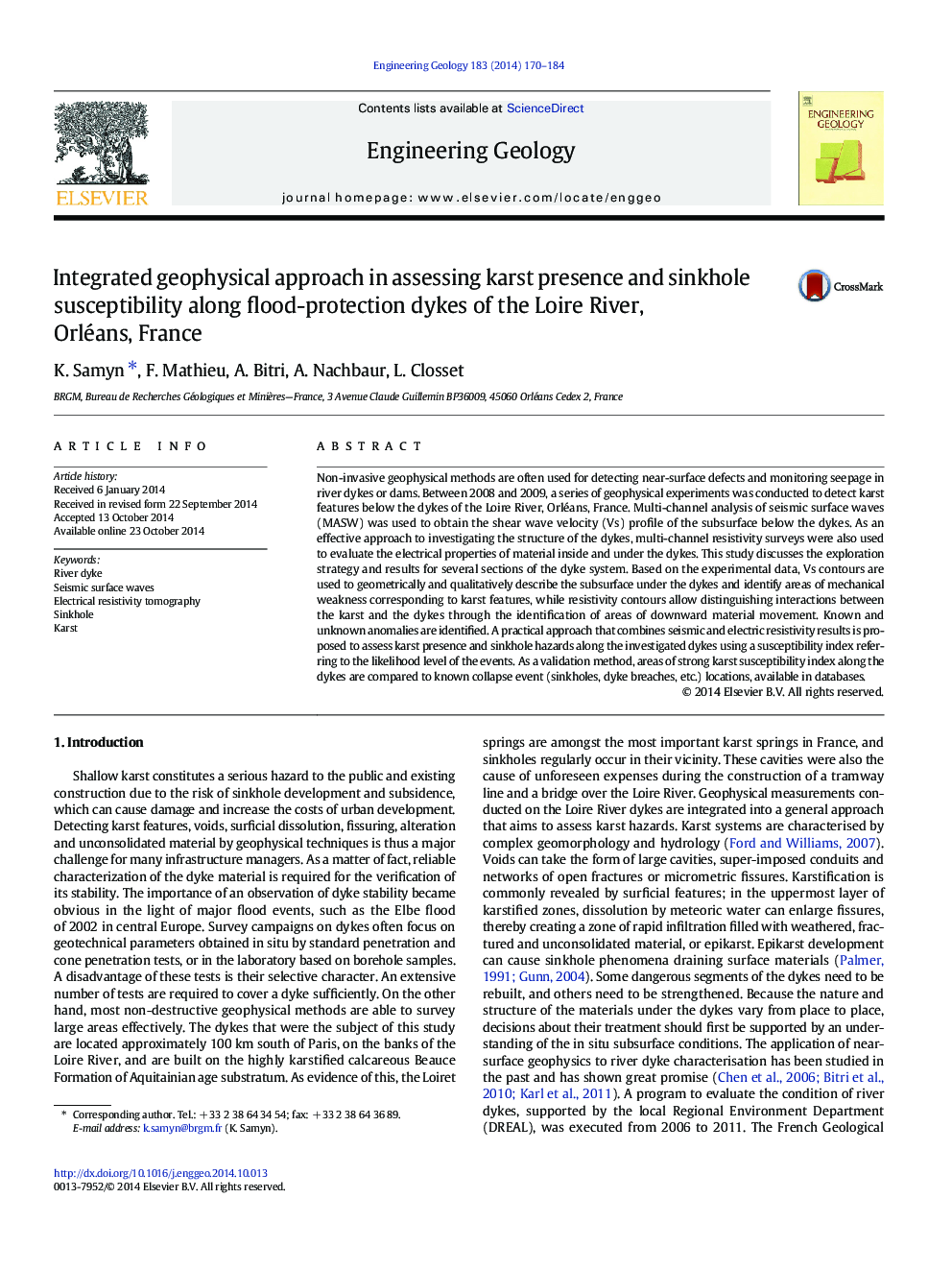| Article ID | Journal | Published Year | Pages | File Type |
|---|---|---|---|---|
| 4743588 | Engineering Geology | 2014 | 15 Pages |
•A series of geophysical experiments was conducted to detect karst features below a dyke system.•The mapping of weak areas in limestone allowed the assessment of karst presence probability level.•Resistivity surveying was useful to detect potential flow of near-surface materials into karsts.•By integrating results, interaction between karsts and the near-surface formations was highlighted.•It then allowed mapping of these sinkhole-susceptible areas with a better accuracy than did former studies.
Non-invasive geophysical methods are often used for detecting near-surface defects and monitoring seepage in river dykes or dams. Between 2008 and 2009, a series of geophysical experiments was conducted to detect karst features below the dykes of the Loire River, Orléans, France. Multi-channel analysis of seismic surface waves (MASW) was used to obtain the shear wave velocity (Vs) profile of the subsurface below the dykes. As an effective approach to investigating the structure of the dykes, multi-channel resistivity surveys were also used to evaluate the electrical properties of material inside and under the dykes. This study discusses the exploration strategy and results for several sections of the dyke system. Based on the experimental data, Vs contours are used to geometrically and qualitatively describe the subsurface under the dykes and identify areas of mechanical weakness corresponding to karst features, while resistivity contours allow distinguishing interactions between the karst and the dykes through the identification of areas of downward material movement. Known and unknown anomalies are identified. A practical approach that combines seismic and electric resistivity results is proposed to assess karst presence and sinkhole hazards along the investigated dykes using a susceptibility index referring to the likelihood level of the events. As a validation method, areas of strong karst susceptibility index along the dykes are compared to known collapse event (sinkholes, dyke breaches, etc.) locations, available in databases.
